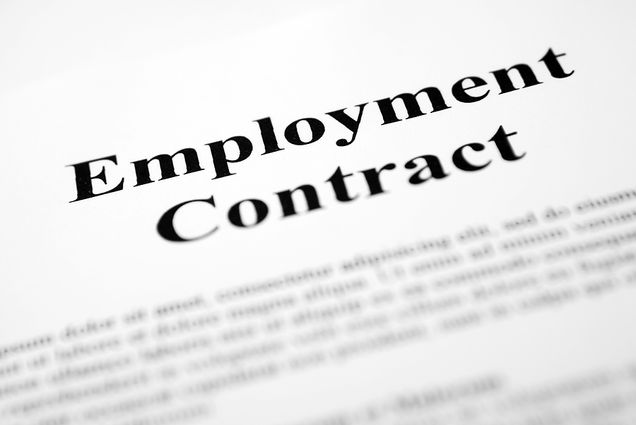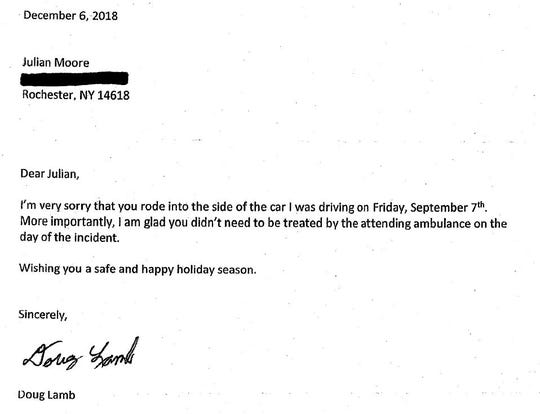Category: Analysis
Mandatory Arbitration Clauses, Class Action Waivers, and the Need to Pass the FAIR Act
Mandatory arbitration clauses and class action waivers have become a fact of life for many American employees. A mandatory arbitration clause is contractual language that a company has a worker sign requiring that worker to resolve legal disputes in private arbitration — “a quasi-legal forum with no judge, no jury, and practically no government oversight”. A class action waiver is contractual language that a company has a worker sign that forfeits that employee’s right to file any claims collectively with other similarly situated workers. These provisions effectively strip away the rights of employees to challenge their employers in court with claims alleging wage and hour violations, discrimination, sexual harassment, and more. Congress must enact the FAIR Act so that our legal system vindicates employee rights to seek justice, access our courts, and end abusive employer practices.
Historically, it was commonplace for American courts to decline legal enforcement of arbitration agreements, especially adhesive contracts (Epic Sys. Corp. v. Lewis, 138 S. Ct. 1612 (2018)). When Congress passed the Federal Arbitration Act (FAA) in 1925, legislative history suggests that the bill was intended to “enable merchants of roughly equal bargaining power to enter into binding agreements to arbitrate commercial disputes,” not to enforce mandatory arbitration agreements and class action waivers against workers in employment contracts. Members of Congress envisioned the FAA to provide an “opportunity to enforce…an agreement to arbitrate, when voluntarily placed in the document by the parties to it”; they did not intend to enforce the law in cases “where one party sets the terms of an agreement while the other is left [to] take it or leave it.” Until recently, courts upheld this interpretation of the FAA’s history and purpose (Prima Paint Corp. v. Flood & Conklin Mfg. Co., 388 U. S. 395 (1967))).
However, starting in the 1980s, this all changed. In Gilmer v. Interstate/Johnson Lane Corp. (500 U. S. 20 (1991)), the Supreme Court held that the FAA requires mandatory arbitration agreements to be enforced against claims arising under the Age of Discrimination in Employment Act of 1967 (ADEA) antidiscrimination law. Later, in Circuit City Stores, Inc. v. Adams (532 U. S. 105 (2001)), the Court held that the FAA’s §1 exemption for employment contracts involving “any…class of workers engaged in foreign or interstate commerce” should be construed narrowly to only apply to employment contracts involving transportation workers.
These landmark decisions spurred a widespread use of arbitration clauses in employment contracts, and emboldened employers to challenge state common law and statute protections that historically limited the enforceability of mandatory arbitration provisions and class action waivers. In 2011, the Supreme Court effectively overturned an earlier 2005 California Supreme Court case that had found legal protections for employees and consumers against the enforcement of class action waivers (AT&T Mobility LLC v. Concepcion, 563 U.S. 333 (2011)). In Am. Express Co. v. Italian Colors Rest. (570 U. S. 228 (2013)), although Respondents argued that the arbitration and class action waiver provisions in their contract were unenforceable because they made effective vindication of their legal rights prohibitively expensive, the Supreme Court held that: 1) the FAA presumptively requires enforcement of contracts of adhesion; and 2) the “effective vindication rule” does not require that one’s assertion of rights be affordable or not cost-prohibitive, but rather only requires that one’s assertion of rights be not prohibited outright.
Eventually, the Supreme Court directly addressed the question of whether employment contracts that include mandatory arbitration provisions are enforceable in Epic Sys. Corp. v. Lewis. Employees argued that under the “saving clause” of the FAA, contractual language that violates the National Labor Relations Act (“NLRA”) right to engage in “other concerted activities for the purpose of collective bargaining or other mutual aid or protection” can be found unenforceable consistent with the FAA; this interpretation was adopted by the Ninth Circuit and consistent with NLRB precedent. However, the Supreme Court held that neither the “saving clause” nor the NLRA altered the legal requirement to enforce arbitration agreements prescribed by the FAA. The Court reasoned that state unconscionability defenses were not valid if they “interfer[ed] with fundamental attributes of arbitration,” such as individualized proceedings. Furthermore, the Court found that §7 of the NLRA did not guarantee employees the right to class or collective action procedures. Finally, the Court held that Chevron shouldn’t apply – based upon the NLRB’s 2012 decision – because: 1) the NLRB was interpreting the FAA, an act that the NLRB doesn’t administer; 2) the NLRB and the Solicitor General dispute the NLRA’s meaning and application; and 3) “there is no unresolved ambiguity for the Board to address.”
 With arbitration clauses effectively privatizing our judicial system for many American workers, employees face information asymmetry and an imbalance of negotiating power with firms, and are therefore unable to contract under fair conditions. By implementing changes to our laws that prohibit employers from forcing employees to sign away their rights, society can improve both economic efficiency and equity within labor markets. Congress can do this by enacting the Force Arbitration Injustice Repeal (FAIR) Act. This Act, passed by the House of Representatives in September of 2019, would ban companies from requiring workers and consumers to resolve legal claims in private arbitration, and would invalidate current mandatory arbitration clauses and class action waivers that have already been signed in consumer or employee contracts.
With arbitration clauses effectively privatizing our judicial system for many American workers, employees face information asymmetry and an imbalance of negotiating power with firms, and are therefore unable to contract under fair conditions. By implementing changes to our laws that prohibit employers from forcing employees to sign away their rights, society can improve both economic efficiency and equity within labor markets. Congress can do this by enacting the Force Arbitration Injustice Repeal (FAIR) Act. This Act, passed by the House of Representatives in September of 2019, would ban companies from requiring workers and consumers to resolve legal claims in private arbitration, and would invalidate current mandatory arbitration clauses and class action waivers that have already been signed in consumer or employee contracts.
Passage of the FAIR Act would protect over 60 million American workers who have signed contracts with mandatory arbitration clauses and class action waivers. Marginalized communities (including women and communities of color), who are the most likely to be subjected to arbitration agreements because they constitute a huge share of the labor pool in industries like education, retail, and healthcare that use mandatory arbitration agreements and class action waivers the most, would greatly benefit from the FAIR Act by gaining access to the courts to litigate sexual harassment claims, sex discrimination claims, and racial discrimination claims. Furthermore, passing the FAIR Act would reduce the bias in employment disputes against employee interests, resulting from the conflict of interest between employers and arbitrators (employers pick the arbitration firm that will hear their case, pay the cost to hire the arbitrator or panel of arbitrators, and usually have a “cozy” relationship with the arbitrators they hire). Studies have found that, because of the “repeat player effect,” arbitrators are often biased toward employers who continuously pick them to handle their cases; Professor Amsler from Indiana University Bloomington demonstrated that “workers are nearly five times less likely to win their case if the arbitrator had handled past disputes involving her employer.”
The FAIR Act has been introduced by Senator Blumenthal in the Senate chamber, and has thirty-eight co-sponsors, but lacks any Republican co-sponsors and has failed to receive any congressional action since it was initially referred to the Committee on the Judiciary. While passage remains unlikely, it is incumbent on Congress to continue fighting for the FAIR Act. Given the Supreme Court’s conservative crusade to interpret the FAA in a way that guts workers’ rights over the last forty years, it is crucial that Congress pass this bill to promote economic, labor, humanitarian, and social justice for all Americans.
 Samuel Shepard graduated from Boston University School of Law in May 2020.
Samuel Shepard graduated from Boston University School of Law in May 2020.
How We Gonna Pay Last Year’s Rent?* Advocating Rental Housing Reform in Boston
*Adam Pascal et al., Rent, on, Rent Original Major Picture Soundtrack (Warner Records 2005).
Unprecedented Rental Relief in Unprecedented Times
The novel coronavirus is disrupting so much of life in Boston, MA. From school and business closings to rising unemployment rates, more residents than ever are concerned than ever with affording basic essentials—including the rent due on the first of each month. The reality of how to pay for rent is substantial in Boston, where an estimated sixty percent of over seven-hundred thousand residents rent, making it the fourth most densely populated region in the United States after the New York Metro Area, Greater Los Angeles, and South Florida Metro Area.
As of April 20, Gov. Charlie Baker signed legislation placing a moratorium on non-emergency residential evictions and foreclosures during the novel coronavirus pandemic. Under this moratorium, landlords are not able to file eviction notices for the next 120 days, or for 45 days from the lifting of Gov. Baker’s emergency declaration, whichever comes first. Additionally, the moratorium bans late fees and negative reporting to credit-rating agencies for unpaid rents if tenants can prove pandemic-related issues with late payments.
Figure 1: Baker signs bill blocking evictions during coronavirus crisis (Tim Logan, Baker signs bill blocking evictions during coronavirus crisis, Boston Globe (Apr. 20, 2020))
Additionally, the federal government has passed a $2 trillion coronavirus rescue package—the CARES Act—including a 120-day moratorium on most evictions at properties that receive federal subsidies or that federal entities insure. Notably, the CARES Act does not apply to eviction proceedings in progress before President signed the legislation on March 27th, or to eviction cases meeting a number of exceptions discussed in the Act.
On April 4, Mayor Martin Walsh announced $3 million in city funds to help Boston residents at risk of losing their rental housing due to the novel coronavirus pandemic. The Rental Relief Fund is managed by the Office of Housing Stability, in partnership with non-profit partners Metro Housing Boston and Neighborhood of Affordable Housing. This program will provide eligible applicants with up to $4,000 in financial assistance to be used for rent. Additionally, the funding will only be available to households earning less than 80 percent of Area Median Income (AMI), which is $72,000 for a two-person household. A significant portion of these funds are reserved for households with extremely low incomes (under $25,000 for a single-person household), and very low-incomes or less than $42,000 for a single person (50 percent AMI). "In the midst of the COVID-19 pandemic, a national crisis at a scale not seen in our lifetime, it is imperative that all levels of government exercise all possible tools to ensure the health and safety of our residents, and to keep them stably housed," said Mayor Walsh. (Thomas Stackpole, How Did Renting in Boston Become Such a Nightmare?, Boston Magazine (May 30, 2020))
The Rent is Due Every Day: Framework Changes to the Rental Housing Market
The efforts of the federal and MA government to address the needs of renters in Boston are necessary measures to help residents maintain stable housing in these unprecedented times. Nevertheless, it is merely band-aid for the greater problem of the daily struggle for low-income Boston residents to make rent, or even establish tenancies.
The Commonwealth provides financial assistance through the Residential Assistance for Families in Transition (“RAFT”) program in which up to $4,000 may be awarded to applicants to establish tenancies. However, with Fair Market Rent (“FMR”) rising in Massachusetts to $1,425 for a one-bedroom and $1,758 for a two-bedroom apartment, the $4,000 allocation from the RAFT program may not be enough to overcome the high bar to starting tenancies in Massachusetts for low-income families who are homeless or at risk of becoming homeless. The barriers to entry establishing a tenancy in MA include: the first full month of rent, last full month of rent, security deposit equal to the first month’s rent, broker fee equal to first month rent, and one-time fee covering installation of a new key and lock. The cumulative effect of these fees requires upwards of four months of rent to gain tenancy in Massachusetts. The impact of this legislation disproportionately bar low-income residents from securing and maintaining affordable housing.
When federal and state aid to low-income residents is not sufficient to help families begin tenancies, it is imperative to look to alleviating some of these barriers to entry to affordable housing. In addition to being the fourth most densely populated region in the United States, Boston also is also boasts the fourth-highest average rental market. Compared to the rental markets of New York City and Los Angeles, the Boston market imposes the broker fee, equal to one full month’s rent, which may be borne by the tenant. This differs to New York’s recent ban on broker fees, and Los Angeles’ burden shifting of broker fees to the landlord.
Massachusetts should consider following in the footsteps of their metropolitan neighbors and propose legislative action banning broker fees in order to decrease the burden to tenants establishing tenancy. In the alternative, the legislature should support the proposed bill H.4452: An Act Relative to Consumer Rights of Renters which shifts the burden of paying broker fees to the landlord with the following language: “[t]his fee shall only be paid by the lessor of the residential dwelling and shall not be transferred to or paid by an other party.”
Conclusion
The novel coronavirus is truly a pandemic affecting every area of daily life, but it’s disparate impact to low-income families towards their struggle to afford housing illuminates a deeper issue that needs to be addressed with expediency. The cost of securing and maintaining a tenancy in Boston is simply too high and not sustainable. As a result, the legislature should tackle broker fees directly to allow more residents the opportunity to initiate affordable tenancies in Boston. This may take the form of eliminating broker fees in their entirety, or shifting the burden to landlords to pay the fee, but ultimately the legislature should take action to protect the most vulnerable member in this time—low-income residents trying to establish and maintain affordable housing for themselves and their families.
 Alexandra Trobe anticipates graduating from Boston University School of Law in May 2021.
Alexandra Trobe anticipates graduating from Boston University School of Law in May 2021.
Post Haste: Why Reform of the US Postal Service is a Matter of Urgent National Concern
President Trump has been antagonistic to the United States Postal Service since the early days of his administration. In his plan for government reorganization, he called for the privatization of the post office. He has tweeted that the post office should charge Amazon more to deliver packages. Most recently, he has threatened to veto COVID-19 emergency funding if it contains direct funding for the post office.
 Ultimately, change is needed with regard to the postal service. However, that change needs to be an expansion in the role of the post office in public life rather than a diminution of its functions. Because the postal service has a universal service obligation to provide all aspects of service at an affordable price to all communities in the United States, it already represents a vital service to thousands of Americans who are not perceived as “profitable” to serve by private companies. Leveraging that power by expanding the role of the postal service can be a powerful boon to democracy and an agent of financial inclusion for underserved communities. Pending legislative proposals exist to address these concerns, and urgent action is needed. These proposed expansions to the role of the postal service require an additional legislative intervention to support its financial viability. To increase access, facilitate participation, and promote strong and healthy communities, three key legislative reforms to the post office are urgently needed.
Ultimately, change is needed with regard to the postal service. However, that change needs to be an expansion in the role of the post office in public life rather than a diminution of its functions. Because the postal service has a universal service obligation to provide all aspects of service at an affordable price to all communities in the United States, it already represents a vital service to thousands of Americans who are not perceived as “profitable” to serve by private companies. Leveraging that power by expanding the role of the postal service can be a powerful boon to democracy and an agent of financial inclusion for underserved communities. Pending legislative proposals exist to address these concerns, and urgent action is needed. These proposed expansions to the role of the postal service require an additional legislative intervention to support its financial viability. To increase access, facilitate participation, and promote strong and healthy communities, three key legislative reforms to the post office are urgently needed.
Postal Banking
The first potential legislative reform is the reintroduction of postal banking. Prior to 1967, the post office served an important role in providing basic financial services to thousands of Americans in rural and underbanked communities. Because the post office is a universal service, ensuring access to reliable mail service everywhere in the country, it was uniquely situated to ensure access to financial services like access to small loans, checking and savings accounts, and basic transactional services to communities not deemed profitable for traditional financial institutions to serve.
In 2017, 6.5% of households in the United States, or nearly 8.5 million households, were unbanked – meaning they had no formal bank account—and an additional 24.2 million were underbanked. These individuals are therefore forced to fringe or informal financial institutions, which often more costly to them because of high interest rates and lack the federal protection and oversight of traditional financial service providers. Re-establishing postal banking would create a formal institution to serve the basic financial needs of these communities, allowing them a greater degree of financial inclusion and economic participation without resorting to check cashers, payday lenders, or other informal actors.
Postal banking is a popular proposal with a historical precedent that can be reenacted to improve economic and financial inclusion for marginalized communities. Senator Gillibrand introduced legislation in 2018 to allow the postal service to conduct limited financial activities, but the bill was never heard in committee. Passing legislation similar to Senator Gillibrand’s bill would represent a key step toward improving access to financial services, and therefore financial inclusion and economic participation, for marginalized communities.
National Vote-By-Mail
The next key legislative reform to the postal service must be a federal move to facilitate national vote-by-mail. Election law is a largely a matter of state law, as states are empowered to set the particulars of elections within their jurisdiction subject only to minimal Constitutional requirements. States can and have taken the lead on expanding vote-by-mail; according to the National Council on State Legislatures, five states conduct all elections entirely by mail, and another three states allow counties to opt into vote-by-mail for all elections. In total, 21 states allow vote-by-mail elections in some capacity. However, the crisis of the novel coronavirus outbreak has underscored the need to take federal action as evidenced by the Supreme Court’s refusal to extend the deadline for absentee ballots in Wisconsin’s April election and the at least 36 resulting cases.
Senator Klobuchar introduced legislation that, among other things, would allow for expanded absentee vote-by-mail in every state during emergency conditions. While the legislation represents a good first step towards federal action on uniform access to vote-by-mail, it is limited to declared emergencies and therefore does not go far enough. In order to manifest the full benefits of vote-by-mail – most notably increased ease of and access to voting, therefore increasing turnout and civic participation – a more comprehensive bill is needed. The Universal Right to Vote by Mail Act of 2009, which would have made it easier to vote by mail by prohibiting states from imposing additional requirements on vote-by-mail eligibility, represents the kind of sweeping, permanent reform that is necessary to facilitate broad access to voting, and therefore civic and democratic participation, among all communities in a safe and healthy manner.
Removing the Pension Prefunding Requirement
For the benefits of these reforms to fully manifest, it is crucial that the post office is financially viable. This requires a final legislative reform – removing the pension prefunding requirement imposed on the postal service in the Postal Accountability and Enhancement Act of 2006 (PAEA).
While advocates of privatization claim that the post office is losing money, those claims fail to capture the full context of the legal predicament faced by the office. PAEA requires the postal service to prefund employee pensions until 2056, a requirement imposed on no other federal agency. Removing this requirement and allowing the post office to adopt the pay-as-you-go model used by the private sector and other federal agencies would result in over $5 billion in additional cash flow to the service. In order to support the other changes to the role of the postal service, this prefunding requirement must be lifted. This would allow the postal service to remain financially viable in its greater capacity without requiring service price increases.
These reforms have champions, including Senator Gillibrand who continues to speak out vociferously in support of the postal service and its potential to facilitate civic and economic participation and to improve access and inclusion for communities across the country. The trio of reforms described here would raise the profile of the postal service and increase its role in the lives of thousands of people across the country. With the reintroduction of postal banking and expansion of voting by mail, a financially bolstered United States Postal Service can support strong communities in a way that private industry has been unwilling or unable to do. Decades of financial exclusion and disinvestment in rural and low-income neighborhoods and the global crisis of the coronavirus have demonstrated that we, as a country, cannot wait to act. Reinvigorating the postal service and its role in society are of urgent national concern.
 Jordan Neubauer anticipates graduating from Boston University School of Law in May 2021.
Jordan Neubauer anticipates graduating from Boston University School of Law in May 2021.
Emergency Actions Related to Paid Sick Leave Amidst Coronavirus
Coronavirus COVID-19 has affected the United States unlike any other national crisis: schools and higher education alike have shifted to virtual classes, millions of employees are working from home, restaurants and gyms are closed down and travel has stopped abruptly. Americans are being told to social distance for fear of spreading the virus. The future seems unclear, as there is no established end date in sight. The United States Congress attempted to respond accordingly passing legislation quickly in response to this crisis. The legislation has attempted to mitigate issues surrounding paid family leave. At this time, paid sick leave is essential to prevent sick people from being out in society, and workers need the opportunity to stay home or the transmission of Coronavirus (COVID-19) will steadily increase. It is important for the health of the public and of the economy, that Coronavirus (COVID-19) decrease, so the hospitals will no longer be at risk of being overcapacity and society can resume as normal.
Bill H.R.6201 - Families First Coronavirus Response Act was one of the first pieces of legislation aimed to restore the country. This bill was quickly signed into law as Public Law No: 116-127. According to the National Law Review, “the bill [went to the] Senate, on March 16 and [easily passed with few revisions]; President Trump publicly expressed support for the bill and in addition to various public health preparations, the bill includes many provisions that will directly impact employers.
“This [law] responds to the coronavirus outbreak by providing paid sick leave, free coronavirus testing, expanding food assistance, unemployment benefits, and requiring employers to provide additional protections for health care workers. Specifically, the law provides FY2020 supplemental appropriations to the Department of Agriculture (USDA) for nutrition and food assistance programs, including the Special Supplemental Nutrition Program for Women, Infants, and Children (WIC); the Emergency Food Assistance Program (TEFAP); and nutrition assistance grants for U.S. territories.
At this time, paid sick leave is essential to prevent sick people from being out in society. For many Americans unpaid sick leave is not a viable choice. The need to earn money and stay on top of bills often overrides the desire to self-quarantine and get healthy. It is a problem of collective action. However, the severity of COVID-19 shows the importance for Americans to self-quarantine to prevent overwhelming the health care system as shown by this graph:
If sick workers are incentivized to stay at home during an illness as serious as COVID, this will limit the spread of the illness, and hopefully allow Americans to recover at home rather than filling up emergency rooms. Paid sick leave can “flatten the curve,” and although such measures prolong the existence of the virus, the effect on emergency medical systems are more manageable.
The Families First Coronavirus Response Act provides an employee may take up to 12 weeks of paid, job-protected leave if the employee:
- is complying with a requirement or recommendation to quarantine due to coronavirus exposure or symptoms, and cannot work from home
- is caring for an at-risk family member who is quarantining; or
- is caring for the employee’s child if the child’s school or place of care has been closed due to public health emergency.
However, the first 14 days of the leave may be unpaid. Employees may choose to use any accrued paid time off, including vacation and sick leave, to cover the initial 14-day period, but employers may not require them to do so. After the 14-day period, the employer must pay full-time employees not less than two-thirds of the employee’s regular rate for the number of hours the employee would otherwise normally be scheduled. For salaried employees, employers must pay two-thirds of the base salary for the weeks remaining after the initial 14-day period.
Violating the Emergency Paid Sick Time Act will be treated as seriously as a Violation of the Fair Labor Standards Act of 1938 (29 U.S.C. §206) (FLSA), meaning that the employers might be subject to substantial penalties under that Act including, but not limited to liquidated damages and fines, among other penalties. Additionally, the law attempts to expand food assistance and unemployment benefits. The law modifies USDA food assistance and nutrition programs to:
“allow certain waivers to requirements for the school meal programs, suspend the work requirements for the Supplemental Nutrition Assistance Program (SNAP, formerly known as the food stamp program), and allow states to request waivers to provide certain emergency SNAP benefits.” You can access more information about this here.
Additionally, the law provides, “$500 million to provide access to nutritious foods to low-income pregnant women or mothers with young children who lose their jobs or are laid off due to the COVID-19 emergency.” This extra effort is very important in order to support American women and children at this time. Moreover, according to the government sources the law also establishes a federal emergency paid leave benefits program. Additionally, the law also aims to expand unemployment benefits and provide grants to states for processing and paying claims, requires employers to provide paid sick leave to employees, establishes requirements for providing coronavirus diagnostic testing at no cost to consumers, and to temporarily increase the Medicaid federal medical assistance percentage (FMAP).
This pandemic has been unprecedented in our nation’s history. U.S. legislators have scrambled to address the COVID crisis and mitigate the damage to both the health of the public and the economy. The Families First Coronavirus Response Act assists multiple facets of life affected by the virus by providing paid sick leave and free coronavirus testing, expanding food assistance and unemployment benefits, and requiring employers to provide additional protections for health care workers. The law does a good job of solving the collective action problem surrounding this. Additionally, it will directly assist the hospitals from becoming over capacitated. Ensuring that infected citizens aren’t compromised or pressured to go to work is a critical component of defeating the spread of this virus.
 Diana Alexandra Martinez anticipates graduating from Boston University School of Law in May 2021.
Diana Alexandra Martinez anticipates graduating from Boston University School of Law in May 2021.
To Combat Adolescent Tobacco Use, Federal Law Raises Purchasing Age to 21
In the final weeks of 2019, in the wake of an outbreak of vaping-related illnesses and death, the federal government raised the minimum age of tobacco sales from 18 to 21. The widely-supported amendment to the Food, Drug, and Cosmetic Act was included in an appropriations bill that Congress approved on December 19th and President Trump signed into law the next day. The new law makes it illegal to sell tobacco products, including electronic cigarettes/vapes, to anyone under the age of 21 throughout the United States. While the law is a positive step for public health, it is long overdue and lacks much needed enforcement enhancement measures.
The federal government followed in the footsteps of 19 states, Washington D.C., and hundreds of local governments which had already increased the tobacco age to 21. The push to increase the tobacco age is referred to as the Tobacco 21 movement. The first Tobacco 21 law was enacted in Nedham, Massachusetts in 2005. In 2013, New York City became the first major city to pass a Tobacco 21 law. The wave of state-level Tobacco 21 laws began in 2016 with Hawaii and California, and continued with
Washington and New Jersey in 2017, Oregon, Maine and Massachusetts in 2018, Virginia, Illinois, Delaware, Arkansas, Maryland, Vermont, Texas, Connecticut and Ohio in 2019, and Washington, Utah, Pennsylvania, and South Dakota in 2020. New Mexico is the latest state to pass a tobacco 21 law which will go into effect in 2021.
The Tobacco 21 movement is supported by a strong foundation of research demonstrating the importance and efficacy of raising the age. In the Surgeon General’s 2012 report on Preventing Tobacco Use Among Youth and Young Adults, the epidemiological research showed that “adolescence and young adulthood represent[s] a time of heightened vulnerability to tobacco use and the initiation of cigarette smoking.” The rationale behind increasing the age from 18 to 21 is to reduce the number of people who begin smoking (or vaping) by making it more difficult to access tobacco during the years of highest vulnerability. And studies show that 98% percent of smokers begin before 26 years old and 90% of daily cigarette use begins before 20 years of age. Raising the age not only makes it more difficult for 18-20 year-olds to purchase tobacco, it also reduces access for minors who often rely on friends who are 18 and older to purchase tobacco products for them. In fact, it is estimated that “90% of persons who purchase cigarettes for distribution to minors are under 21.”
 In addition to conventional cigarettes and tobacco products, Tobacco 21 laws also prevent people under the age of 21 from buying electronic cigarettes or vapes. This is because electronic cigarettes are deemed to be tobacco products by the FDA. Electronic cigarettes are the most commonly used tobacco products among youth today, and a 2018 study showed that 1 in 5 high school students and 1 in 20 middle school students use these products. Those numbers were likely even higher in 2019 when the mysterious vaping illnesses, which prompted this legislation, began. Even before the outbreak, the high rate of electronic cigarette use among American youth was troubling. Not only were public health officials warning of the known harms associated with vaping (such as potential for lung damage, and dangers of nicotine consumption for brain development), but also the universe of unknown risks associated with vaping as these products are relatively new and rapidly changing.
In addition to conventional cigarettes and tobacco products, Tobacco 21 laws also prevent people under the age of 21 from buying electronic cigarettes or vapes. This is because electronic cigarettes are deemed to be tobacco products by the FDA. Electronic cigarettes are the most commonly used tobacco products among youth today, and a 2018 study showed that 1 in 5 high school students and 1 in 20 middle school students use these products. Those numbers were likely even higher in 2019 when the mysterious vaping illnesses, which prompted this legislation, began. Even before the outbreak, the high rate of electronic cigarette use among American youth was troubling. Not only were public health officials warning of the known harms associated with vaping (such as potential for lung damage, and dangers of nicotine consumption for brain development), but also the universe of unknown risks associated with vaping as these products are relatively new and rapidly changing.
The vaping illness outbreak began in August 2019, when vaping product users— including many teens—suddenly began presenting to emergency departments with severe lung injuries. By December 4th, the Centers for Disease Control and prevention had confirmed over 2,200 cases and 48 deaths related to the outbreak. The reason for the sudden increase in vaping related illness was not immediately clear, and it stirred up panic among parents of teenagers and mobilized public health professionals who had long feared the harmful effects of vaping.
With the outbreak capturing the nation’s attention, Congress and the Trump administration were under pressure to do something to address the problem. With such powerful momentum in the Tobacco 21 movement, public health advocates and policy makers had already began calling for a federal Tobacco 21 law years ago (read more about that here, or here). Passing a federal Tobacco 21 law to address the vaping illness outbreak was an easy choice because, in contrast to more drastic measures such as banning electronic cigarettes entirely, raising the age enabled Congress to respond to the fear and public outcry surrounding the vaping illnesses in a manner that was actually supported by tobacco and vaping companies. While some advocates feel that raising the age was not a drastic enough measure to combat the vaping epidemic, it is certainly a positive step for public health and to combat tobacco consumption generally.
While the new law will make it more difficult for those under 21 to access tobacco products, the efficacy will depend largely on proper enforcement of the law. Enforcement of age restrictions on tobacco purchasing has been demonstrably poor, with many retailers still selling tobacco products to minors before the new law became effective. While amending the FDCA, Congress could have used this opportunity to not only raise the tobacco age but also to ramp up the enforcement mechanisms contained within the Act, by increasing funding, penalties or requirements on the number of compliance checks. Unfortunately, that did not occur and the new law. Without a change in the law to effectuate stricter enforcement measures, it will be difficult for the federal and state governments to oversee enforcement of the law and to make sure that retailers properly comply.
The federal Tobacco 21 law is a bittersweet victory for public health champions who have been warning against the risks of vaping and campaigning for an increase in the tobacco age since long before the mysterious vaping illnesses began. In order for our tobacco laws to truly be successful, our legislators must increase enforcement and properly fund measures that prevent the initiation of tobacco use. As with all areas of public health, we must act to prevent —not just respond once crises have already begun.
 Rebecca Mashni graduated from The Ohio State University in 2015 with a B.S. in Public Health and graduated from Boston University School of Law in May 2020 with a J.D.
Rebecca Mashni graduated from The Ohio State University in 2015 with a B.S. in Public Health and graduated from Boston University School of Law in May 2020 with a J.D.
Supplying Housing Demand: Gov. Baker’s Proposed Housing Choices Act
There is no question that Massachusetts generally, and the Boston area in particular, is mired in an affordable housing crisis. Renters and would-be buyers are heavily burdened with disproportionate housing costs and are forced to compete for a limited supply of units. As of 2019, Massachusetts rental costs climbed to the third highest in the nation, surpassed only by California and Hawaii, making this the rare occasion in which beating New York isn’t something to celebrate. To increase housing, the state must address the burdensome rules that hinder the development of new units; especially multifamily homes. One possible solution is the proposed Housing Choices Act.
Though there are many facets to this issue and no simple solution, Gov. Charlie Baker is focusing on attacking the restrictive zoning rules and arduous permitting processes. Gov. Baker argues these rules are causing shortfalls in housing stock, driving up prices as demand far outstrips supply. Gov. Baker’s bill, the Housing Choices Act, was stalled throughout 2019, until late December when it was referred to the House committee of Ways and Means.
The Act has garnered the support of organizations such as the Boston Medical Center, Real Estate Bar Association, Massachusetts Municipal Association, Massachusetts Association of Community Development Corporations, Metro Housing Boston, and many more.
Gov. Baker’s administration has set a target of building 135,000 new housing units by 2025 and the Governor believes rezoning to allow more multifamily construction is a key piece in increasing housing production. Since 2017, Gov. Baker’s Housing Choices Initiative has incentivized municipalities to help meet this target by providing grants to support housing construction, but access to those grants still requires communities to vote in favor of rezoning. The Housing Choices Act would simplify rezoning by reducing the threshold of votes needed to pass certain kinds of progressive, production-oriented zoning changes in Massachusetts municipalities from two-thirds to a straight majority vote. Massachusetts is among the few states which require a supermajority for these kinds of zoning votes. The Governor calls the Housing Choice Act a “critical” piece of legislation in pursuit of production goals because it will ease that rezoning process.
Among the zoning changes to which the new straight majority vote would apply are the adoption of “smart-growth” districts under Ch. 40R, which governs…. “Smart growth” includes the construction of multi-family buildings, special permits for high-density construction, the reduction of size and parking requirements, transit-oriented projects with a set percentage of affordable units, and permission to construct accessory dwelling units.
Criticism: Too Narrow or Too Broad?
Critics such as Darnell Johnson, regional coordinator at Right to the City Boston, however, believe that the bill “ignore[es] the needs of working families” and will only lead to more luxury condos and other housing out of reach for most Massachusetts residents. Chris Norris, executive director Metro Housing Boston, concurs, and points out that with 250,000 low-income households forced to spend upwards of 50% of their income on rent, “incentives alone are not sufficient to product affordable housing.” Norris cites the fact that Ch. 40R was passed in 2004, was expected to generate 33,000 new units over ten years, and more than $20 million has been poured into its incentives. As of 2017, however, this law has produced only 3,500 units, less than half of which are designated as affordable.
Advocates within and without the Baker administration counter that this bill is not meant to be a panacea for housing woes but rather a step in the right direction. Clark Zeigler, executive director of the Massachusetts Housing Partnership, points out that right now good housing proposals are defeated despite winning majority support because of the current two-thirds voting requirements. Such was the case in Salem, where a measure to increase accessory dwelling units, one of the Housing Choice Act’s targets, won the majority, but not supermajority, and thus failed to pass. Salem Mayor Kim Driscoll supports Gov. Baker’s efforts to prevent situations like this, calling on local authorities to pursue a “strong partnership with state leaders.” Once this problem is solved, MHP and other affordable housing advocates can and will continue pushing for further means of providing relief to those overly burdened by housing costs. In an official statement, CHAPA (Citizens’ Housing and Planning Association) made its support of the Housing Choice Act clear for the same reasons. “Lowering the super majority threshold required for zoning changes will empower the simple majority of people in a community to vote ‘Yes’ for housing.” CHAPA sees the bill as an essential opportunity to help communities “encourage housing development and undo policies that prevent housing production and perpetuate segregation.”
Another source of criticism is a fear that the bill would inevitably cause unwanted and overly dense construction which will damage the character of older neighborhoods. Similarly, Rep. Smitty Pignatelli (D-4th Berk.) proposes that the switch to straight majority be predicated on local approval out of concern for state-level infringement on local autonomy. Sen. Brendan Crighton (D-Lynn), co-chairman of the Housing Committee, does not believe this is a real cause for concern, insisting that the bill “doesn’t take away any local control. . . [but rather] puts together a more common-sense approach that says a majority of folks can make a decision on the matter.” He sees this and similar legislation as crucial because Massachusetts’ housing production is half of what it was in the 1970s while rent has risen by 75% over the past twenty years.
Some communities, such as Needham and Springfield, believe they and some 70 other municipalities should be exempt from the bill because 10 percent or more of their housing stock already meets state “affordability” thresholds. Needham Select Board Chairman John Bulian sees requiring his town to comply would be penalizing it despite its having exceeded Massachusetts’ affordable housing percentage goals. Such complaints, however, seem to miss the larger picture of spurring more housing growth by enabling local residents greater control over their zoning through simplified zoning vote processes.
Massachusetts is in a housing crisis—one that can only be fixed by finding a way to build more housing. An important first step is to reform the rules and processes that restrict the needed housing units.
 Kellen Safreed anticipates graduating from Boston University School of Law in May 2021.
Kellen Safreed anticipates graduating from Boston University School of Law in May 2021.
Protecting Vulnerable Road Users: A Vicious Cycle
Ten-year-old, Julian Moore was riding his bicycle in a suburb in Rochester, NY on Sept. 7, 2018, when 66-year-old Doug Lamb hit him with his Range Rover.

Figure 1: Julian Moore and his mother, Jenny Moore, walk near the spot where Julian was hit while bicycling. (Photo: Max Schulte/Rochester Democrat and Chronicle).
Lamb stopped the car after his collision with Moore, but did not give his information to Julian, the paramedics, or Julian’s mother. By the time the police arrived, Lamb had departed the scene. It took two weeks for the police to track Lamb down and charge him with the misdemeanor crime of leaving the scene of an accident causing personal injury. Pittsford Town Judge John Bernacki had decided to adjourn the case in contemplation of dismissal, meaning Lamb’s record would be wiped clean, on the condition that Lamb write an apology to the boy.
His apology letter read:
This act of “contrition” drew sweeping public scorn in January after the boy’s mother, Jenny Moore, posted a copy of the letter on her Facebook Page and the backstory subsequently made headlines around the country. In response, prosecutors moved to re-open the case and proceed to trial for failing to meet the apology requirement of his plea deal.
Prosecutor Daniel Strollo said his office pursued the case to the extent that it did because Lamb neglected to meet the condition to which he agreed to resolve the matter. “Mr. Lamb was given one simple instruction: to send a letter of apology,” Strollo said. “He didn’t do that. When you don’t follow through on the terms of a commitment for a plea or a disposition of a case, our office is not going to just ignore it.”
Lamb plead guilty on Dec. 6 in Pittsford Town Court to leaving the scene of an accident causing property damage—a mere traffic infraction. In exchange, Lamb was ordered to pay a $200 fine, perform eight hours of community service.
Julian’s story garnered national attention for his crash. Lamb was protected by a 5,000-pound vehicle of steel. Julian was protected by a plastic helmet. If it seems ludicrous the legal system could enable Lamb to walk away with a small fine and apology, it may be time to even the playing field and shift legislative protections toward vulnerable road users such as Julian.
Vulnerable Road Users
All over the country, thousands of similar crashes are occurring in the shadows, without the benefit of a national audience holding drivers accountable. The National Highway Traffic Safety Administration data shows 857 cyclists were killed in crashes with vehicles the U.S. in 2018. The same study found Florida leading the country with 161 of those fatalities, finding bicycle deaths for those 20 and older have tripled since 1975.
However, Florida legislators are prepared to step up and do something about the mounting problem, formally adopting “Vision Zero Florida” with a strategic goal of zero traffic fatalities and severe injuries for all users. Part of this vision includes advocacy for a proposed bill, H.B. 455 – Traffic Offenses, in the Florida Legislature which provides criminal penalties for persons committing moving violations causing serious bodily injury or death to a vulnerable road user including: a fine, period of house arrest, mandatory driver education, revocation of driver license. One of the largest shifts however, is the establishment and definition of “vulnerable road user.”
The League of American Bicyclists, a national bicycle advocacy organization, defines a Vulnerable Road User (“VRU”) as “anyone who is on or alongside a roadway without the protective hard covering of a metal automobile. The term includes bicycle riders, pedestrians, motorcyclists, people in wheelchairs, police, first responders, roadway workers and other users like a person on a skateboard or scooter. It is meant to include people who are especially at risk of serious bodily harm if hit by a car, or truck.”
VRU laws operate on the principal of general deterrence - by providing an increased penalty for certain road behaviors that lead to the serious injury or death of certain road users people will be deterred from doing those behaviors around those users.
In 2007, Oregon became the first Legislature to pass, HB 3314, creating an enhanced penalty for careless driving if it contributes to serious physical injury or death to a “vulnerable user of a public way.” Currently, only nine 9 states have laws that define a vulnerable user or VRU and provide particular penalties for actions towards those vulnerable road users or when violations of traffic law lead to the serious injury or death of a VRU – Connecticut, Delaware, Florida, Hawaii, Maine, Oregon, Utah, Vermont, and Washington. In Texas, approximately 28 cities have passed their own VRU laws in the absence of a statewide version.
To advance this legislative effort, the League of American Bicyclists, proposes a model VRU statute for state legislatures. The model language: Section 1) defines VRU protected persons; Section 2) defines when the law is applicable and who can be charged with a violation of the law; Section 3) requires a person charged according to this law to attend a hearing; and Section 4) provides the punishments that are to be given to a person convicted of a violation of this law.
Road Ahead
Without enhanced protection for VRUs through increased penalties, it is common for a driver who kills or seriously injures a VRU to just be given a ticket for careless driving, as illustrated in a 2013 report by the Center for Investigative Reporting finding that in 238 pedestrian fatalities 60% of motorists found to be at fault or suspected of a crime faced no criminal charges.
As the closing lines of Prosecutor Strollo’s motion on behalf of Julian Moore states, “[t]he people are ready for trial.” Echoing a crystalizing national awareness that calls for increased protections to vulnerable road users, the people are ready for legislative change—and states legislatures should consider adopting a version of the VRU model law to meet this demand.
 Alexandra Trobe anticipates graduating from Boston University School of Law in May 2021.
Alexandra Trobe anticipates graduating from Boston University School of Law in May 2021.
The Fight for LGBTQ+ Justice and the Equality Act
Throughout American history, the LGBTQ+ community has continually faced unconscionable levels of harassment, discrimination, and vitriol; Congress cannot waste another session without passing the Equality Act into law.
Discrimination against the community is pervasive; LGBTQ+ Americans have reported harm to their mental health (69%), physical well-being and safety (45%), school environment (39%), work environment (53%), and relationships with their neighbors and local communities (57%). More than half of LGBTQ+ Americans have faced discrimination by healthcare providers. In surveys, LGBTQ+ Americans admit to using vague language about relationships (42%), refusing to talk about their partner (37%), hiding affiliations to LGBTQ+ groups (15%) and avoiding discussion of LGBTQ+ issues altogether (31%) out of fears of facing harassment and other damaging bigotry. Additionally, LGBTQ+ people have often changed the way they dress (15%), changed the way they talk (15%), cut important people out of their lives (16%), and moved away from their families (17%) because of the harmful consequences of discrimination.
Furthermore, transgender Americans face a disproportionate share of violence and discrimination – even compared to other members of the LGBTQ+ community. 33% of trans Americans have been denied equal services or physically attacked when visiting a place of public accommodation (like a hotel, restaurant, or government office). 27% of trans workers have been fired, not hired, or denied a promotion because of their gender. Additionally, 25% have been refused treatment or physically assaulted by their primary physician, health clinic, or hospital due to their gender identity – despite new Affordable Care Act regulations that were written with the specific intention to prohibit such discrimination against trans Americans by federally-funded providers. Members of the trans community have reported avoiding public transportation (11%), stores and restaurants (26%), and going to the doctor (24%) for fears of facing abuse and violence.
Queer people face high rates of discrimination and violence because of state and federal inaction. In twenty-nine states, LGBTQ+ Americans can be fired from a job, evicted from their home, or denied a line of credit because their employer, landlord, or bank disapproves of their sexual orientation or gender identity. In fourteen states, there is no ban on LGBTQ+ discrimination in schools. Clear and universal legal protections for LGBTQ+ Americans are desperately needed if our country is ever going to heal the evils that have been done for generations against our vulnerable population.
Therefore, Congress must pass a bold LGBTQ+ civil rights bill – such as the Equality Act sponsored by Representative David Cicilline (D-RI). This legislation would amend the Civil Rights Act of 1964 to protect Americans from discrimination based on “sex, sexual orientation, gender identity, or pregnancy, childbirth, or a related medical condition of an individual, as well as because of sex-based stereotypes” in federal funding, education, housing, employment, credit access, jury service, and public accommodations. It covers claims based on: (1) association with another member of a protected class; or (2) a perception or belief, even if inaccurate, that someone is a member of that class. The Act would expand “public accommodations” to include “any establishment that provides a good, service, program,…health care, accounting, or legal services,” or “any…transportation service.” Furthermore, the Act prohibits denying individuals access to a “shared facility” (restroom, locker room, dressing room, etc.) in accordance with their gender identity. Finally, the bill allows the Justice Department to bring these claims in federal court, and prohibits anyone who violates the Equality Act from asserting protection under the Religious Freedom Restoration Act of 1993 (RFRA) as a valid defense to discriminating against LGBTQ+ Americans.
 The Equality Act would be a crucial step forward for America. First, the bill expands protections under the Civil Rights Act of 1964 for all protected classes under the law, not just the LGBTQ+ community. For example, the bill would extend the Civil Rights Act’s current ban on discrimination based on sex to also cover public accommodations, state and local government services, and federal funding. Second, this bill would enact into federal law stronger anti-discrimination protections for the LGBTQ+ community than even the most liberal possible Supreme Court decisions could provide through Bostock v. Clayton County, Georgia (whether discrimination against an employee because of sexual orientation constitutes prohibited employment discrimination “because of . . . sex” within the meaning of Title VII of the Civil Rights Act of 1964, 42 U.S.C. § 2000e-2) or R.G. & G.R. Harris Funeral Homes Inc. (whether Title VII prohibits discrimination against transgender people based on (1) their transgender status or (2) sex stereotyping under Price Waterhouse v. Hopkins) this summer.
The Equality Act would be a crucial step forward for America. First, the bill expands protections under the Civil Rights Act of 1964 for all protected classes under the law, not just the LGBTQ+ community. For example, the bill would extend the Civil Rights Act’s current ban on discrimination based on sex to also cover public accommodations, state and local government services, and federal funding. Second, this bill would enact into federal law stronger anti-discrimination protections for the LGBTQ+ community than even the most liberal possible Supreme Court decisions could provide through Bostock v. Clayton County, Georgia (whether discrimination against an employee because of sexual orientation constitutes prohibited employment discrimination “because of . . . sex” within the meaning of Title VII of the Civil Rights Act of 1964, 42 U.S.C. § 2000e-2) or R.G. & G.R. Harris Funeral Homes Inc. (whether Title VII prohibits discrimination against transgender people based on (1) their transgender status or (2) sex stereotyping under Price Waterhouse v. Hopkins) this summer.
Finally, public opinion strongly supports passage of federal LGBTQ+ protections. 79% of Democrats, 56% of Republicans, and 70% of Independents polled in 2018 supported passage of non-discrimination laws to protect members of the LGBTQ+ community. This support includes a majority in every age group – from millennials to the elderly – and even includes a majority of white evangelical Protestants, a group that typically has conservative positions on social issues. Outside of polls, there are also a number of powerful interest groups supporting passage of the Equality Act. Such groups include civil rights organizations (ACLU, Anti-Defamation League, NAACP, AARP), women’s rights groups (NOW, CLUW), corporations (Visa, Mastercard, Apple, Google, Netflix, Microsoft, Amazon, eBay, IBM, Facebook, Airbnb, Twitter, Intel, American Airlines), medical and professional organizations (AMA, APA, ABA, National PTA), unions (CWA, SEIU, AFSCME, AFT), celebrities (Karamo Brown, Nyle DiMarco, Adam Rippon, Jesse Tyler Ferguson, Taylor Swift), and religious organizations (Episcopal Church, United Methodist Church, United Church of Christ, Evangelical Lutheran Church in America, More Light Presbyterians, United Synagogue of Conservative Judaism, Muslims for Progressive Values, Hindu American Foundation, Unitarian Universalist Association).
The Equality Act is certainly not perfect. An ideal bill would attack not just de jure LGBTQ+ discrimination, but also de facto discrimination caused by implicit biases and socioeconomic disparities. Such a law dedicated to establishing LGBTQ+ justice might: 1) specifically include HIV/AIDS status as a class of protected individuals covered by the Equality Act; 2) expand federal funding for Medicaid, public health clinics, mental health coverage, and combatting youth homelessness; 3) ensure all homeless shelters and rehabilitation centers receiving federal funds are LGBTQ+ affirming; 4) bolster protections against hate crimes, gun violence, and the targeting of LGBTQ+ populations by law enforcement; 5) require all private and public insurance plans to cover HIV prevention; 6) require school districts that receive federal funds to adopt sex education programs that are comprehensive and LGBTQ+ inclusive; 7) institute codes of conduct prohibiting bullying and harassment in our public schools; and 8) prohibit LGBTQ+ conversion therapy. However, under the current limitations of today’s Congress, the Equality Act seems a good first step towards building a broader movement for LGBTQ+ justice over the next decade.
Although polling shows that most Americans do not think “religious objections should be a reason to deny service to an LGBTQ person” in business (57%), healthcare (64%) or employment (62%), a recent Reuters poll found that only 23% of Americans know that federal LGBTQ+ protections haven’t been enacted yet. Given the high popularity of the Equality Act, and the even higher need for its invaluable protections, Congress must finally pass this vital civil rights bill into law. The lives of LGBTQ+ men, women, and children across the United States are at stake.
 Samuel Shepard graduated from Boston University School of Law in May 2020.
Samuel Shepard graduated from Boston University School of Law in May 2020.
Time to Hang up the Boxing Gloves? The Fight Over the Johnson Amendment
Most Americans have never heard of the Johnson Amendment, never mind the nearly 70 year legal and political battle over its meaning and reach. What is the Johnson Amendment, and why is it so important to so many organizations that they have been either trying to protect or destroy it for decades? This post will attempt to explain the long-fought political battle over the Johnson Amendment.
The Johnson Amendment prohibits not for profit, or 501(c)(3), organizations from participating in politics, including restricting them from endorsing political candidates. In 1954, then-Senator Lyndon B. Johnson sponsored the amendment to the tax code after two tax-exempt organizations opposed his candidacy in the recent Texas primary. Until then, tax-exempt organizations had been extremely engaged in political activity through the country. The Johnson Amendment was relatively successful in getting tax-exempt organizations from being politically engaged, at least directly. Many organizations, however, simply have separate political branches called 501(c)(4) political action branches. 
Recently, Amendment opponents, such as Congressman Steve Scalise (R-La.) and 40 other Republican Representatives, have introduced the Free Speech Fairness Act. This bill seeks to amend the Internal Revenue Code of 1986 “to allow charitable organizations to make statements relating to political campaigns if such statements are made in the ordinary course of carrying out its tax-exempt purpose.”—effectively repealing the Johnson Amendment. If passed, it will permit 501(c)(3) tax-exempt organizations under Section 501(c)(3) to endorse or oppose political candidates without fear of losing their tax-exempt status.
Supporters of the Johnson Amendment are varied, including both secular and religious organizations. The most outspoken supporter of the amendment is the Freedom From Religion Foundation (FFRF). The FFRF and other similar organizations fear repealing the Johnson Amendment would blur the traditional line between church and state. Other religious organizations, such as the Jewish Federations of North America, oppose the FSFA because they fear getting involved with politics would tarnish the integrity of their faith. Many of these organizations, particularly the FFRF, are especially concerned about the threat of “dark money” they fear repealing the Johnson Amendment would create. “Dark money” refers to political spending by nonprofit organizations that are not required to disclose their list of donors to the IRS or the public. This hidden list of donors can be problematic as many believe this allows nonprofit organizations to receive donations in exchange for political endorsements, influence in elections, and lobbying activities. Specifically, all 501(c)(3) nonprofits, except for churches and other religious organizations, must submit Form 990 to the IRS and demonstrate how they are spending their money and how much money they are receiving (though it does not require disclosure of who the donors are). Because churches do not need to submit this form, the Freedom From Religion Foundation and other opponents of the FSFA fear the bill could lead to churches becoming unregulated Political Action Committees.
Many conservative and religious organizations, on the other hand, support the FSFA. Its biggest proponents are religious organizations such as the National Religious Broadcasters (NRB), as well as conservative organizations like the Family Research Council (FRC). The Johnson Amendment has also garnered attention from President Trump, who has promised on many occasions to eliminate it due to its restrictions on free speech for priests, pastors, and other religious organizations. These groups, the sponsors of the FSFA, and the President argue the Johnson Amendment is unconstitutional because it stifles free speech, including the ability of religious figures and organizations to openly endorse or oppose individual political candidates from the pulpit. Some groups, like the Family Research Council, even argue the Amendment restricts the content of sermons as well, a claim made in an article titled “Figures of (Free) Speech,” published on February 4, 2019, which has since been taken off of the Family Research Council website.
However, is this argument an accurate representation of the law? Does the Johnson Amendment actually stop religious leaders from preaching on topics like “life or marriage” or of “conscience and convictions,” as the Family Research Council claims? The answer seems to be no. The Johnson Amendment does not restrict churches from discussing social or moral issues with their congregations, or even from lobbying Congress. The only restriction the Johnson Amendment imposes is specifically related to candidate endorsements and/or candidate opposition. Moreover, individual priests and pastors are actually free to endorse candidates when they do so as individuals, on their own, when they are clearly speaking as private citizens and not for their religious organization.
Beyond the organizations who are vehemently opposed to the FSFA, a LifeWay poll published in 2016 found that 79% of Americans do not believe it is appropriate for pastors to endorse political candidates during a public church service.
 This, therefore, begs the question, is the repeal of the Johnson Amendment really worth fighting for year after year? Not only do the constant attacks against the amendment cost pro-Johnson Amendment organizations like the FFRF money in time and labor expended through research and lawsuits, but it similarly costs opponents of the amendment valuable donation dollars that could be put towards something more meaningful or substantial.
This, therefore, begs the question, is the repeal of the Johnson Amendment really worth fighting for year after year? Not only do the constant attacks against the amendment cost pro-Johnson Amendment organizations like the FFRF money in time and labor expended through research and lawsuits, but it similarly costs opponents of the amendment valuable donation dollars that could be put towards something more meaningful or substantial.
In 2012, Pew Research published an independent guide to the IRS rules on political activity by religious organizations. The Pew Research guide “Preaching Politics From the Pulpit: 2012 Guide to IRS Rules on Political Activity by Religious Organizations” delineates specifically what religious organizations legally can and cannot do within the context of the Johnson Amendment. According to the guide, the political campaign intervention prohibition does not restrict the discussion of any issues desired, as long as they are not linked to supporting or opposing any specific candidates, PACs, or political parties. It therefore seems that the potential gains for the freedom of speech from this bill passing would be very little compared to the thousands of dollars wasted each year on both sides of the fight on this issue.
Finally, not only is the purpose of the bill not supported by the American public, but the concerns raised by opponents of the bill are especially troubling and should certainly make everyone question whether repealing the Johnson Amendment will ultimately do more harm than good. The separation of church and state is a foundational principle of our nation, and beyond the need to protect that balance, the concern organizations like FFRF have about the potential for dark money in religious institutions seems a valid concern, particularly because they do not submit Form 990.
Ultimately, lawmakers in Washington will need to decide whether it is worth continuing to introduce this bill every year and cost both sides of the argument time and money either trying to fight or support the repeal of the Johnson Amendment.
 Kate Lipman anticipates graduating from Boston University School of Law in May 2021.
Kate Lipman anticipates graduating from Boston University School of Law in May 2021.
The Comprehensive CREDIT Act: Taking Down Credit Barriers
A pivotal financial moment, like finding a new job, buying a home, or taking out a student loan, a person's credit history can become an obstacle to achieving what they want to do. Though credit reports and scores can be effective in determining whether to lend money to a borrower, they also tend to dictate where people can work or live. The Comprehensive Credit Reporting, Enhancement, Disclosure, Innovation, and Transparency Act (“Comprehensive CREDIT Act”) would change who could use a consumer’s credit information to make determinations and what impact, and for how long, other factors could have on one’s score. Congress should enact this bill. Not only is the Fair Credit Reporting Act (“FCRA”) outdated, but credit scores also tend to perpetuate discriminatory behaviors.
Credit Reports and Scores
A credit report provides a history of a consumer’s credit activity, including bill payments, current statuses of credit accounts, and adverse records like foreclosures, bankruptcies, and civil judgments. Credit reports also provide personal information like addresses, points of contact, and the consumer’s social security number. Three companies dominate the credit reporting industry: Equifax, Experian, and TransUnion. Though they never receive a consumer’s outright consent to compile personal data, these three private companies are the main credit report providers. If there are errors on the credit report, the consumer (1) must have access to a credit report or find out about the error another way; and (2) notify the credit reporting agency rather than the creditor that reported the error. Once the consumer has done this, the credit reporting agency’s duties are triggered.
A credit score is an assessment of how likely it is a consumer will fulfill a debt obligation on time. Several factors go into determining a credit score: payment history, current debts, the types and number of accounts one currently has, how long those accounts have been open, and issues like debt collection or bankruptcy. Each of these factors, which are of varying weights, are used in a private company’s “scoring model” (i.e., a formula) to concoct a three digit number. Scores generally range from 300-850; the closer to 850, the more “creditworthy” a consumer is. Though credit reporting companies have disclosed generally which factors compose a credit score, they refuse to disclose the entire scoring model. Indeed, most use trade secret laws as a shield. Without disclosing the scoring model, credit reporting companies can engage in retaliatory and discriminatory behaviors. For example, predatory lending leads to Black and Hispanic homeowners to have higher mortgage payments. Because of historical racist policies leading to lower credit scores and less wealth among these populations, they are also more at risk of not being able to keep up with payments. The discrimination therefore feeds itself: borrowers with lower credit scores end up with even lower scores because of missed payments and foreclosures.
Who Uses Credit Scores?
Financial institutions are the biggest credit score users. Credit scores help them determine whether they should allow a consumer to obtain a line of credit or home mortgage, for example. The other major context where credit scores are important is employment. Employers conduct credit checks as part of a background check process. They usually look at the consumer’s entire credit report, not just her score. One argument is that if an individual is not “trustworthy” enough to make payments on time, they may not be trustworthy on the job, either. In certain positions, such as those involving accounting, this information would matter. But for most positions, the association between trustworthiness and creditworthiness can have prejudicial effects. (One study found that those with lower credit scores tend to have more “agreeable personalit[ies],” if anything.)
Comprehensive CREDIT Act
In January 2020, Congresswoman Ayanna Pressley (D-Mass.) introduced the Comprehensive CREDIT Act. The Comprehensive CREDIT Act, which amends the FCRA, proposes several reforms: (1) allowing for easier processes to fix credit report errors; (2) restricting use of credit scores for hiring and employment purposes; (3) providing relief for student loan borrowers with poor credit; (4) medical debt reporting wait times and bans for medically necessary procedures; and (5) reducing the amount of time adverse credit information remains on one’s credit report. Predictably, the House voted along party lines and passed the bill. However, it is now awaiting action in the Senate.
The chief reform involves what factors impact a consumer’s credit score. The Act proposes removing certain types of late payments, like student loan and medical bill payments. For the remaining delinquent or negative information, the reporting periods are shortened. For example, if an individual files for bankruptcy, the bankruptcy can appear on a person’s credit report for seven to ten years. Under the Act, the period would be shortened to four to seven years. The Comprehensive CREDIT Act also requires that when there are discrepancies in reports provided to the consumer and the requestor, those discrepancies must be explained to the consumer.
The bill also addresses credit score use for employment screening. The bill prohibits employers from denying an applicant solely because of her credit score. The bill may not go far enough, though: the employer can still request the information, and the job applicant can approve its use. While the employer’s decision cannot be made based on that information, they will nevertheless still have access to it.
The bill’s opponents say that the proposed reforms will undermine confidence in credit scores, which are integral to our financial system. By softening the impacts some credit events have, a creditor may not have the full picture of an individual’s ability to pay. The effects could harm more consumers than protect them, as riskier activity may go unreported or not have as much as a determinative effect. To be sure, credit scores are a pillar of our financial system. Any change to them will have a significant impact on how the financial impact operates. Even so, credit scores continue to have a discriminatory effect on certain communities of borrowers and only perpetuate disparate impacts. Rep. Pressley’s bill focuses largely on that impact. The purpose of the bill is to minimize the impact of credit-related issues. A credit report currently only provides a black and white picture a person’s debts and credit history; a credit score is a numeric representative of that history. It does not show that a medical debt incurred was for a life-saving procedure or that a foreclosure stems from a predatory lending process. The impacts of those events stay with the creditor for some time, further impacting their lives even though they have overcome the event. For example, a poor credit report tip the scales in favor of other candidates, especially for competitive positions.
The COVID-19 pandemic is already creating significant financial implications. Inabilities to pay credit card bills because of unexpected income losses will affect consumers for years to come, even when the financial system recovers. Because so many Americans live paycheck-to-paycheck, and because COVID-19 was largely unplanned for, consumers should not have to face the consequences. Provisions in Rep. Pressley’s bill would remedy some of those concerns. Now is clearly the time to enact the Comprehensive CREDIT Act.
 Kathryn Buckley anticipates graduating from Boston University School of Law in May 2021.
Kathryn Buckley anticipates graduating from Boston University School of Law in May 2021.









